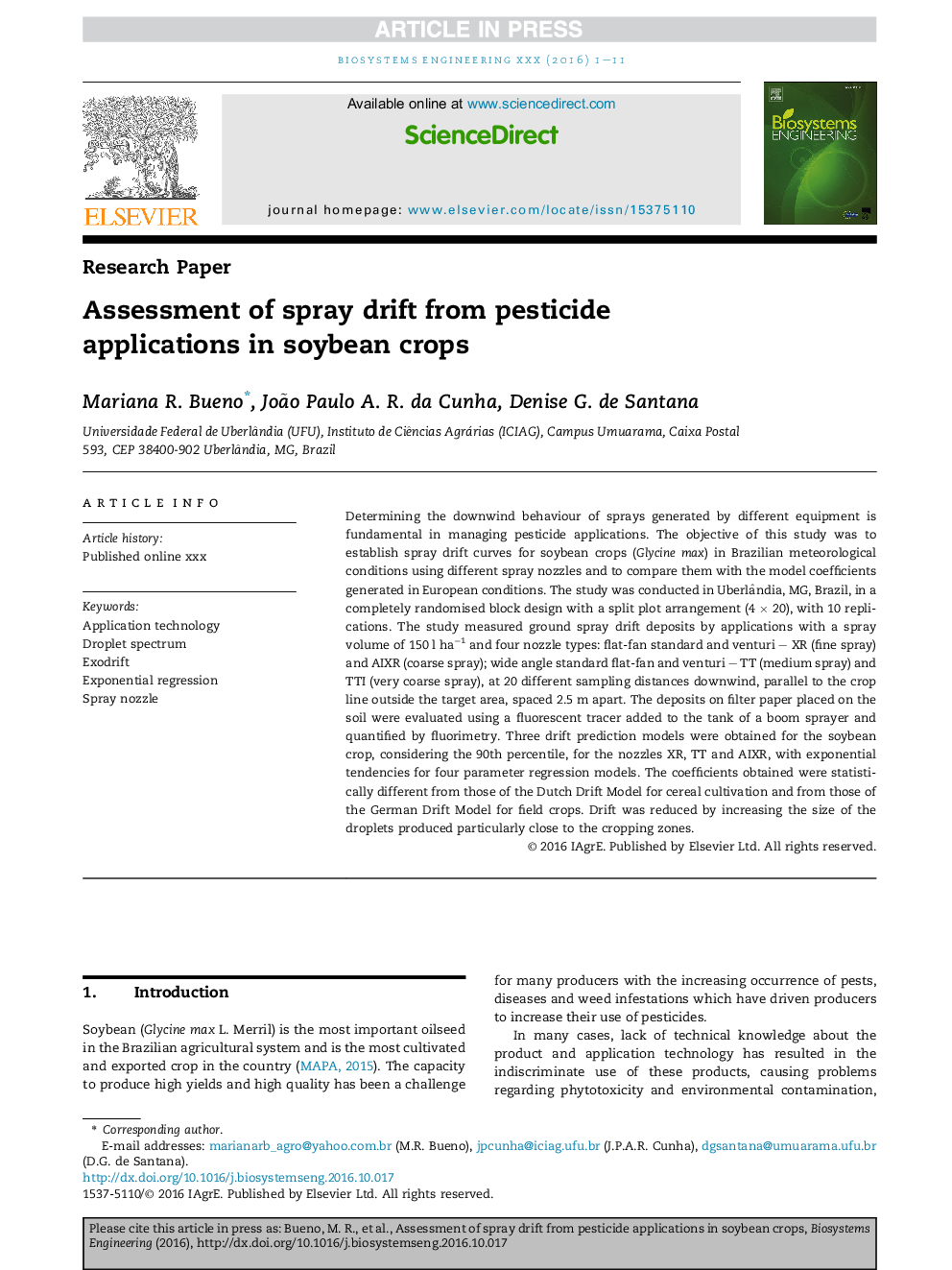| Article ID | Journal | Published Year | Pages | File Type |
|---|---|---|---|---|
| 5471849 | Biosystems Engineering | 2017 | 11 Pages |
Abstract
Determining the downwind behaviour of sprays generated by different equipment is fundamental in managing pesticide applications. The objective of this study was to establish spray drift curves for soybean crops (Glycine max) in Brazilian meteorological conditions using different spray nozzles and to compare them with the model coefficients generated in European conditions. The study was conducted in Uberlândia, MG, Brazil, in a completely randomised block design with a split plot arrangement (4 Ã 20), with 10 replications. The study measured ground spray drift deposits by applications with a spray volume of 150 l haâ1 and four nozzle types: flat-fan standard and venturi - XR (fine spray) and AIXR (coarse spray); wide angle standard flat-fan and venturi - TT (medium spray) and TTI (very coarse spray), at 20 different sampling distances downwind, parallel to the crop line outside the target area, spaced 2.5 m apart. The deposits on filter paper placed on the soil were evaluated using a fluorescent tracer added to the tank of a boom sprayer and quantified by fluorimetry. Three drift prediction models were obtained for the soybean crop, considering the 90th percentile, for the nozzles XR, TT and AIXR, with exponential tendencies for four parameter regression models. The coefficients obtained were statistically different from those of the Dutch Drift Model for cereal cultivation and from those of the German Drift Model for field crops. Drift was reduced by increasing the size of the droplets produced particularly close to the cropping zones.
Related Topics
Physical Sciences and Engineering
Engineering
Control and Systems Engineering
Authors
Mariana R. Bueno, João Paulo A. R. da Cunha, Denise G. de Santana,
